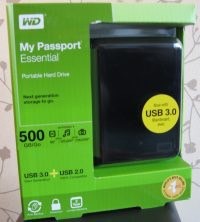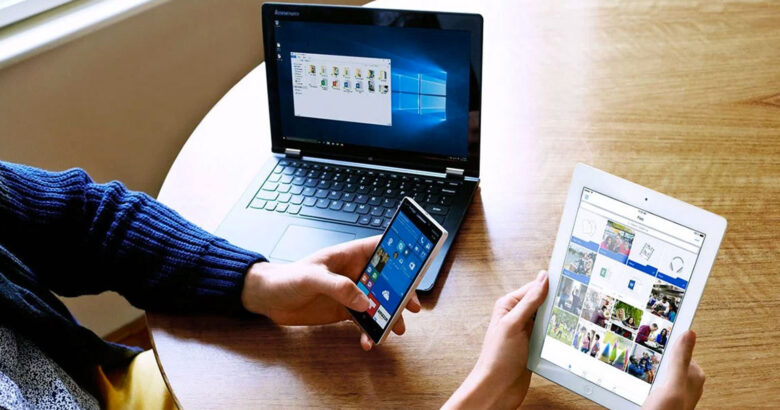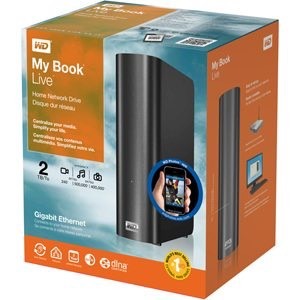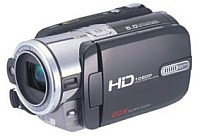![]() Traditional hard drives have been around for many years now and have become an essential part of our computing world. Offering huge amounts of storage at very affordable prices, it remains an extremely attractive proposition for those who want to save thousands of images, collections of music, home movies and video games.
Traditional hard drives have been around for many years now and have become an essential part of our computing world. Offering huge amounts of storage at very affordable prices, it remains an extremely attractive proposition for those who want to save thousands of images, collections of music, home movies and video games.
There is a newer technology though that is fast becoming a more popular choice with enthusiasts and while the prices are considerably higher than traditional offerings, the future remains bright as prices reduce and speeds increase.
Introducing the SSD, otherwise known as Solid State Drives…
What is a Hard Drive?

A hard drive is the main storage device within a computer, be it a netbook, notebook or desktop. Providing an area to save all of your created files as well as a location to store the operating system (such as Windows) and other software applications.
As a Windows PC user, you may better know your hard drive as the ‘C: drive’. Although computers can feature multiple drives including a floppy disk or optical drive (CD-ROM, DVD-ROM or Blu-ray), C: Drive is typically your primary hard drive and the place you will often save your files when you wish to use your computers own internal storage.
Technology Differences
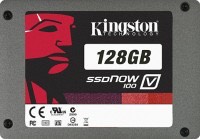
The chances are your computer features a traditional hard drive, and by that I mean one that includes physical moving parts to read and write information known as data. Inside a hard drive are what’s known as ‘platters’, which are thin circular objects that rotate and crucially store data. This data is accessed by a ‘head’, which you can think of as a needle off an old vinyl record player that moves from one section to another to access different content – except in this case it actually rests on a thin cushion of air rather than being in direct contact. This ‘head’ moves from one location to another to read and write information to the platters and it is this physical movement that can cause quite a few issues and delays for computers and their users.
Image courtesy of Wikipedia
A Solid State Drive otherwise known as an SSD has no physical moving parts whatsoever, reducing potential problems and dramatically increasing the time it takes to read and write data.
Real World Advantages
When your computer starts to run a little slow or is even grinding to a halt, the usual hardware components that are considered for an upgrade usually include the processor (CPU), internal memory (RAM) or possibly the graphics card (GPU). Add to this list though the inclusion of a Solid State Drive…
The main reason you may wish to upgrade your existing system with a Solid State Drive is for the lightning speeds it offers when accessing data.

One of the major downsides of the older traditional hard drives is that the hard drive has to first locate the area of the platter the information requested is stored. Referring back to our record player analogy, imagine being told to play the third track 30 seconds within the song and then being told to play another track at a completely different section. The result is a painful search, while the mechanism moves to the right area where the data you need resides. This is the main reason why we are told to defragmentate hard drives, to keep the data as orderly as possible rather than a jumbled mess – making it easier for the hard drive to locate information and therefore less delays.
This is slowed down further when multiple programs are all requesting information at the same time and this is illustrated best when you first turn on your computer and experience the ‘boot’ process. For Windows users, this usually results in waiting for the operating system to appear and then watching as each individual application painfully and slowly loads. During this time, you are usually powerless to do anything as the screen populates with your favourite applications. The best clue of completion of the dreaded ‘boot-up’ is when the HDD activity light on your computer finally stops flashing. Then and only then do you really feel confident enough that your computer is ready for action.

Solid State Drives firstly don’t store data in the same way and feature no physical moving parts, making it easier to access information and in fact you don’t even need to defragmentate SSDs either. Your Windows boot time reduces greatly and once what required preparation and consumption of a cup of tea while you patiently waited, now only needs a few moments of magic as you admire the fantastic speed of the Windows operating system appearance on your screen, yearning for your interaction.
This alone could impress you enough to purchase one of these Solid State Drives (SSD), however these speed benefits manifest in many other areas as well.
No matter which application you open, whether simple or fully featured in its complexity – the SSD compared to the traditional hard drive technology doesn’t waste any time and rapidly presents you with the software you requested.
Other benefits include the fact that Solid State Drives can’t be harmed by many impacts or vibrations. Again the ‘no physical moving parts’ advantage greatly reduces the risk of data corruption due to any sudden movements, drops or even magnetic forces that might have otherwise interfered.
I am sure we are all aware of the sound a traditional hard drive makes too. Hearing the innards spin up and the faint but obvious grinding cues indicating the work within taking place. SSDs win again here as well, as they are totally silent and unsurprisingly it’s the fact that there are ‘no physical moving parts’ that makes this possible.
It is really a difficult task to explain in words the sensations you receive when everything whizzes along so quickly. It gives your computer a whole new lease of life and whether you are using a desktop, notebook or netbook – the quality of the experience of using your computer with a Solid State Drive within is simply wonderful. I don’t want you to feel I am overstating its benefits or I am lost in some silly romantic notion just due to the fact it’s a relatively new technology – yet the Solid State Drive that is now within my computer has reduced so many of my previous frustrations and has actually improved my attitudes towards its daily use. Switching on the computer no longer feels like an epic struggle to climb an almost unreachable summit, instead it feels more like a little journey where the destination is just around the corner.
Cost Versus Storage Space

As Solid State Drives are a newer technology, the cost is therefore higher than the more traditional hard drives available. SSDs are becoming more affordable as time passes, but are still more expensive and lack the enormous storage capacities of their traditional cousins.
One of my recommendations for those with desktop computers is to use a Solid State Drive (SSD) as the place to store your operating system and most important applications, then using a far larger traditional hard drive for storing games, photos, music and videos. With careful selection of the kinds of software that uses the SSD for storage, you can enjoy increased speeds without breaking the bank as you won’t need a very large Solid State Drive to enjoy the benefits. I currently use a 128GB SSD for my desktop computer, which has a further 2TB provided by a traditional hard drive for media file storage – which works very well indeed and the increase in speed is quite remarkable.
For those who have notebooks (laptops) or netbooks, your decision is a little tougher as you typically are unable to have two hard drives within the confines of your hardware – therefore restricting the amount of storage potential. If you choose for example a 128GB solid state drive, external storage could be used for larger media files including USB connected hard drives, USB memory sticks and so on.
Final Thoughts
![]() Once you have experienced the brilliance of Solid State Drives, you will find it incredibly hard to use any computer that doesn’t feature one within its core components. The speed is quite frankly astonishing and this is set to increase even further over time as this technology continues to progress.
Once you have experienced the brilliance of Solid State Drives, you will find it incredibly hard to use any computer that doesn’t feature one within its core components. The speed is quite frankly astonishing and this is set to increase even further over time as this technology continues to progress.
Operating system loading times are greatly reduced, applications load incredibly fast and the lack of any physical moving parts have advantages that span both speed, quietness and data safety,
Solid State Drives may not yet scale to the huge storage space capacities offered by traditional hard drives, but they are totally irresistible to those craving a completely new fluid experience when computing.
Solid State Drive Advantages:
- Typically twice the speed over traditional hard drives
- Reduced power consumption
- No physical moving parts resulting in quicker access to data, resistant to impacts or vibration and no sound
- Not vulnerable to magnetic disruption which could otherwise cause loss of data
- No need to defragment data
Solid State Drive Disadvantages:
- More expensive than traditional hard drive technologies
- Total storage size options still limited compared to traditional hard drive technologies
